Argentina: A Mirror of Your Future
ARGENTINA is a distant mirror that reflects what may be North America’s future. The country is a small-scale laboratory of the effects of migration: A suitable migration policy can transform a nation for the good; a wrong one spoils it.
Argentina became independent from Spain in 1816 just after Napoleon’s occupation of the Iberian Peninsula. After a period of struggle between caudillos, the country was unified with a constitution inspired, in part, by that of the United States. A generation of brilliant thinkers led by Juan Bautista Alberdi and Domingo Faustino Sarmiento saw European immigration as the key to modernity, and this was enshrined in Article 25: “The Federal Government will encourage European immigration; and may not restrict, limit nor tax in any way the entrance into Argentine territory of those foreigners, who have the purpose of working the land, improving industries, and introducing and teaching sciences and arts.”
To this end, President Nicolás Avellaneda (1837 – 1885) pressed for the Colonization and Immigration Law of 1876, which established immigrant recruiting agencies in the main cities of Europe. Qualified emigrants were offered third-class tickets on the steamships that ran from Genoa, Marseilles, and Naples to Buenos Aires. Newcomers were welcomed at the Hotel de Inmigrantes, and assigned jobs in the city or on farms in the interior. The architects of the “Great Immigration” made mistakes — little land was made available to newcomers, and many of them ended up in bad housing in the cities — but between 1880 and 1914 Argentina received more than six million Europeans, most of them from Italy, Spain, France, Germany, and Britain. In that very short period, Argentina went from being a colonial backwater to a First-World nation.
President Domingo Sarmiento (1811 – 1888), the seventh president of Argentina, was a personal friend of Ralph Waldo Emerson and of Horace Mann’s wife. Known as the Horace Mann of South America, he reduced illiteracy to a rate lower than in some European countries; by 1947, illiteracy in Argentina was only 13 percent. With Mrs. Mann’s help, Sarmiento imported the “65 Valliants,” a group of young women teachers from Boston who were willing to teach in the then far desert of South America. Argentines will always be grateful to them for their pioneering efforts.
Sarmiento’s ideas were thoroughly Western. In his 1884 book, Civilization Versus Barbarism, he wrote:
The South of America is going backward and will lose his providential mission of being the continuation of modern civilization. Don’t stop the United States in its march . . . . Let’s reach the United States instead. Let’s be America like the sea is the ocean. Let’s be the United States.
In those days, many thought Argentina was called to be the United States of the south. By 1914, it had the sixth highest GDP in the world. Thanks to immigration, it went from a population of 800,000 — mostly mestizos — in 1852, to 8 million in 1914. Eighty-five percent were White, and most of the remaining 15 percent were light-skinned mestizos, completely assimilated to Western culture. The concept of multiculturalism did not exist. Buenos Aires became known as the Paris of South America, with wide avenues, mansions, palaces, theaters, museums, schools, excellent universities, and renowned scholars and researchers.
Here are some of the buildings from that era. This is the President Roca School, built in 1900 — a neo-Greek Palace that resembles the Madeleine Church in Paris.
The Columbus Theater was built in 1908:
The Christopher Columbus Monument was erected in 1921 by the Italian community of Buenos Aires in gratitude for their new country. It weighs 623 tons and is 26 meters high. It is made of a single piece of Carrara marble, which was brought from Italy by ship, to be assembled in Buenos Aires. In 2013, after Hugo Chávez of Venezuela accused Columbus of genocide, the monument was removed and replaced by the statue of a mestiza heroine.

The Emergence of a Great Nation
Sarmiento’s schools produced brilliant minds in philosophy, literature, and science: Alejandro Korn, Leopoldo Lugones, Eduardo Wilde, Paul Groussac, Carlos Octavio Bunge, Agustín Álvarez, Juan Agustín García, Miguel Cané, Ricardo Rojas, Alfonsina Storni, Cecilia Grierson, among many others. If they had lived in Europe, they might have achieved global fame.
In 1912, Argentina was one of the first countries to establish the secret, universal, and mandatory franchise [a mistake that many White countries have made. — Ed.]. It was democratic while Europe turned fascist. One of the first subway services of the world was built in Buenos Aires by the Anglo Argentine Trolley Co. in 1913. That same year, Ford Motor Company opened its third overseas plant in Buenos Aires.
The first and only branch office of Harrods of London opened in Buenos Aires in 1914. It was a luxury shopping center of seven floors and 506,000 square feet that operated in the center of the city until closing in 1998. The elegant building stands empty today. See here old and actual pictures of Harrods Buenos Aires.
The railway system of 30,000 miles linked the whole country and was one of the best in the world. Big central stations are witnesses of that glorious past. This is what the Constitution Central Station looked like in 1920:
There is a collection of excellent pictures of old Buenos Aires here.
In the 1920s, tango music and tango orchestras triumphed in the ballrooms of Paris, and became, together with jazz and the foxtrot, the fashionable rhythms of the day. Incomparable tango singer Carlos Gardel, the son of immigrants who starred in such films as The Tango on Broadway, could have become the next Rudolph Valentino. He died at age 44 in an airplane accident in 1935.
In 1918, the University Reform Movement started in Cordoba and Buenos Aires, transforming medieval canons of teaching into modern academic freedom. The movement then spread to all of Latin America. Argentine publishing houses were the most prolific in the region and the entire Spanish-speaking world read Argentine authors, books, and translations.
Peruvian Nobel Laureate Mario Vargas Llosa remembers how the Argentine children’s magazine Billiken shaped his childhood in the remote city of Cochabamba, and how he discovered modern literature — from Faulkner to Sartre — through the translations of Argentine publishers that served the entire continent: “Like uncountable number of young people of my generation, I owe a good part of my literary formation to that passion for books that nests in the heart of Argentine culture.” Even today, Buenos Aires has more book shops than any other city in the world.

In 1913, the Argentine GDP was almost as great as that of the rest of South America combined. Per capita income was 50 percent higher than in Italy, 85 percent higher than in Spain and Norway, 170 percent higher than in Japan, and more than 4 times greater than that of Brazil. Our Armed Forces were the most powerful, well equipped, and best trained in South America. The Military College of the Nation, where army officers are still educated, was at a level that rivaled that of West Point.
Argentina was neutral during the First World War, and exported beef and grain to both sides. It accumulated so much capital and gold that the Argentine peso became one of the strongest currencies in the world. Rich Argentine families would spend part of the year in Paris — as Arab sheiks now do in London. The French still use the Belle Époque saying, “rich as an Argentine.”
Cities were safe; women and children could walk anywhere any time. Aside from a few cases dealing with Russian Jewish anarchists or Italian Mafiosi, police mainly dealt with violations of municipal ordinance. There was great social mobility; a farmer’s son could study, work hard, and become a doctor or businessman.
The Decline
Very little is left today of that Argentina. It began to fade during the Great Depression in the 1930s. Many historians blame the closing of international markets after the Wall Street Crash — that was certainly a factor — but there was another cause: European immigration stopped. Instead, there was migration of Mestizos and Amerindians, both from the country to the city and from neighboring Paraguay, Bolivia, Peru, and Chile. These new arrivals were prolific and ringed the main cities — Buenos Aires, Rosario, Cordoba, Mendoza — with belts of poverty. Unlike the Europeans, whose arrival was planned and encouraged, Amerindian migration was uncontrolled. White Argentina looked the other way.
With no European immigration, Paraguayans became the largest foreign community, followed by Bolivians, Peruvians, and Chileans. During the 1990s, Paraguayan immigration increased by 30 percent, and during the same decade, Peruvian immigration increased fourfold, from 16,000 to 88,000 per year. Between 1980 and 2001, Bolivian immigration grew 62.3 percent.
Official figures show that by 2001 there were around one million foreigners of Latin American origin [1] — about 3 percent of the population — but this figure is not reliable, since it reflects only legal immigrants. Nor is there any information about second, third, and fourth generations of arrivals since 1930. Argentina now has an underclass of people essentially outside the system, with unreliable housing, no sewers or clean water, bad food and health care, and few clothes. According to Argentine Catholic University’s Social Observatory, 4.5 million people were living in such conditions of extreme poverty in 2016. That was 10 percent of the population; 60 percent of them are probably foreign born, with the other 40 percent mostly second- and third-generation foreigners.
In 2004, the socialist government of Nestor Kirchner passed a new migration law, implementing what was known as the “Patria Grande” (Big Homeland) program. This included amnesty for all illegals, as well as a relaxation of income requirements for immigrants. It also guaranteed free access to public education at all levels, free medical care, family reunification, elimination of the obligation for public officials to report illegal immigrants, issuance of residence permits with only a sworn statement rather than proof of income, and voting rights in local elections. These measures were clearly meant to win votes from non-Whites.
A 2005 executive order went further, granting residency to anyone who simply declares he is a relative of either an Argentine or a permanent resident. In just a few months, the Patria Grande program added 442,000 legal residents to the population, and encouraged many more to immigrate illegally. This was done without any consideration for how these people would be housed, what jobs they would take, what taxes they could pay, or what schools and hospitals they would use.
The following chart shows the way in which the population has changed. The number of foreign born decreased from 1980 to 2001, even as Hispanic immigration increased. This was because so many of the original cohort of the foreign born — Europeans — were dying and not being replaced.
In light of immigration over the last 80 years, my own calculation is that 18 million inhabitants — nearly 40 percent of the population — are not White. There are very few genetic studies, but the foremost one [2] comes close to confirming my estimate. The results probably inflate the figure for Whites, with an estimate of 65 percent. The estimate for Mestizos or Amerindians is 31 percent, and for Africans, 4 percent. It is undeniable that Argentina has declined; I believe it is at least in part a consequence of the decline in the number of Whites.
Unlike the European influx, there has been no planning for recent immigration. All these newcomers occupy space in an irregular way, overloading public services and infrastructure. Fifty percent of the suburban area of Buenos Aires lacks running water or sewers, and many people drink contaminated water. Public hospitals have declined badly, as have schools and the justice system. Judges prefer not to send delinquents to prison, because they know minor criminals will live in sub-human conditions, where they will learn from professional criminals. Inmates are overwhelmingly non-White.
The White middle class pays taxes for public schools but almost never uses them, preferring to pay a second time for private schools. Many Whites also avoid public hospitals because of poor treatment. Absurdly, tourism agencies organize “medical tours” to bring sick foreigners to Buenos Aires, where they enjoy free treatment of a quality not found in their own countries. Just two months ago, a senator complained to the media that a major hospital was fully booked for an entire month by people coming from Paraguay.
Argentina’s ranking in international PISA testing continues to decline. In 2012 we were in 60th place, behind Chile, Mexico, Uruguay and Brazil. In 2015, test-takers were limited to Buenos Aires, which is largely European. That year, our rank rose to 39th, closer to the countries of original immigration such as Italy, Spain, and France. Education has declined to the point that only 50 percent of children can finish secondary school.
Like other institutions, our public universities are groaning under an influx of foreigners who are studying free of charge. Over the last 20 years, enrollment of foreigners increased 482 percent.
Culture, music, food, and other customs are changing. Tango and Argentine Rock are being replaced by Cumbia and other foreign rhythms.
Most non-Whites live in poor neighborhoods, which shade imperceptibly into shanty towns and slums. There are no streets; just passages too narrow for an automobile. This is a perfect environment for hiding criminals, for drug trafficking, and for child lookouts who warn when strangers — especially the police — enter the area. Villa 31 is the most famous Argentine slum.

Eighteen million people get a social welfare check from the government each month, and 50 percent of the labor force is in the public sector. A small number of taxpayers must support all these people. Unemployment is over 10 percent and the poverty rate is 33 percent. Poverty, moreover, is at a Third-World level of misery — not the relatively comfortable “poverty” of the United States. Unlike Europeans, Amerindians and Mestizos rarely achieve upward mobility, even after decades in the country. The enormous sums spent on public schools seem to make little difference.
Even the city centers can be chaotic because of demonstrations organized by piqueteros demanding more social services. A few months ago, thousands of illegal street vendors shut down traffic in Buenos Aires when they took over key points in the city, demanding the right to continue selling smuggled goods on the streets. Demonstrations sometimes end in rioting.
Street closures by piqueteros are so common that commuters check the schedule of demonstrations before they leave home — but there can always be unannounced blockages. In February, there were 198 street blockages of varying duration in Buenos Aires.
Segregation
Not surprisingly, there has been a boom in gated communities and private cities. They started in the 1950s as upper-class country clubs in the suburbs. With the influx of immigrants and rising crime, they have proliferated and become real walled citadels. They have a unique, defensive architecture of fences, cameras, armed guards, constant patrolling, and vehicle inspections. The surrounding commercial areas — restaurants, discos, shopping centers, theatres, office buildings, transport facilities — are essentially reserved for White people. Non-Whites are not forbidden, but they are almost never seen.
Every year, gated communities expand north of Buenos Aires, between kilometers 30 and 60 of the main highway. In 2007 there were 600 such communities covering 140 square miles — almost double the area of Buenos Aires itself. There are now an estimated 800 gated communities, covering 200 square miles, with a population of 600,000 inhabitants. In Argentina as a whole, there are more than 1,000 such protected communities.
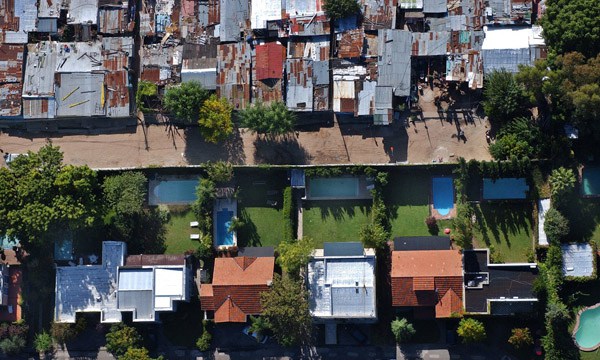
The most famous gated community is the enormous Nordelta Complex, which includes 20 neighborhoods. Inside this self-governing town there is everything necessary for completely isolated living. Within its miles of walls and watchtowers, there is a shopping mall with a cinema and supermarket, 70 local businesses, a private hospital, a 140-room five-star hotel, two of the best golf courses of the country, a marina for hundreds of yachts, and five private schools with 4,500 pupils. There are plans to build two exclusive train lines with nonstop service to downtown Buenos Aires. Contact with the rest of the population and with other social classes is nil, especially for children. Crime still breeches the walls, however; even Nordelteños, as residents are called, are sometimes assaulted.
Outside the walled cities, the middle class lives in fear. Neighbors organize to protect each other because the police are overwhelmed. Every house has a watchdog, alarms, and security cameras. Before you open the garage door, you look both ways to be sure there is no danger on the block. If your wife comes home late from work, it’s best to wait for her at the bus stop. Neighbors set up WhatsApp groups to alert each other to loiterers and unknown parked cars. You may get a midnight SOS WhatsApp message from a neighbor who is suffering a break-in.
You may also get a midnight call from someone who claims to have abducted your child. The crook will ask for ransom money while in the background there is a fake voice that is supposed to be your child crying for help. Clever people — celebrities and even a judge — have fallen for this scam.
Real kidnappings are a more serious problem, with an estimated one every 14 hours in 2014 — though experts estimate that only 35 percent of cases are reported to the police. There have been some famous victims. Current president Mauricio Macri was kidnapped in 1991 and released after 12 days in return for a ransom payment estimated at as much as $6 million. Relatives of star soccer players are also tempting targets.
The second city of Argentina, Rosario, is famous for violent narco gangs with names such as “Los Monos” (The Monkeys) or “Los Pillines” (The Little Imps). Over the last decade, the homicide rate hit 20 murders per 100,000 people — four times the rate in the United States. Other violent crime is also very high. In La Plata, just 40 miles from Buenos Aires, a gas station was robbed 380 times over the past 10 years.
Ethnic conflict is an open secret. On one side of the dividing line are Whites and a residual percentage of light Mestizos assimilated to Western culture. On the other side are non-assimilated brown Mestizos and a small number of pure Amerindians. Darker Argentines resent the Whites, but depend on welfare from the people they hate. They clamor for higher taxes and wealth redistribution.
The reality of race is discussed only in private or in anonymous postings on social media. Here is a typical news story with the headline, “Shanty Town’s Population Increased 52.3% between 2001 and 2010.” At the end of the article there is a notice: “Closed to users’ participation due to the content of comments.”
But just as in the United States, many Whites ignore race; for them, Argentina is a melting pot where all races live together in peace. They refuse to see the connection between race and such things as poverty and crime. They repeat the mantra that improved education and welfare will solve all problems.
The word “race” is never heard from government or in the media. Unlike in the United States, you will never see a government form that asks about race or ethnicity. Talking openly about race can bring social disapproval or even legal action. Since 1997, there is a government agency called INADI (National Institute against Discrimination, Xenophobia and Racism) that acts as a speech police. Of course, prosecutions are biased. In a radio interview, piquetero leader Luis D’Elia said, “I hate the whites . . . the only thing that moves me is visceral hatred against you.” INADI did nothing.
There is an increasing awareness of what is happening. According to a 2016 Ipsos poll, 54 percent of Argentines say there are too many immigrants in the country, 55 percent worry about the pressure of immigrants on public services, and just 12 percent believe immigration has a positive effect on the country.
Conclusion
In 30 years, a good migration policy transformed Argentina into one of the best places on earth. From 1880 to 1910, six million Europeans chose to come to Argentina rather than to the United States. Later, a bad migration policy — or the absence of any policy at all — drove the same country towards fragmentation and chaos. The decline accelerated between 1990 and 2017.
People have different views on how migration impacts a country, and social and economic change is never explained by just one factor. Argentina has been badly governed since the mid-20th century. The left-wing/right fascist Peronistas had a mafia-like patronage machinery. The right-wing military dictatorships were famous for death squads and crony capitalism. The war against Britain in 1982 for the distant Malvinas (Falklands) Islands was a terrible mistake.
Since the return of democracy in 1983, there has been sustained pandering to the underclass, and this was especially the case during the last decade of rule by Nestor and Cristina Kirchner. Still, it is impossible to ignore the devastating decline that accompanied the change in Argentina’s population.
In both North and South America, Mestizos are pushing relentlessly towards the higher latitudes. Americans still have a Mestizo population that is only 17 percent of the total, a figure Argentina reached in the 1970s. It is a mirror that shows what America will be like when that figure reaches 40 percent.
Notes
[1] Populations of immigrants in Argentina. National Directorate of Population, Secretariat of Interior. Ministry of Interior. Republic of Argentina. 2009.
[2] Avena S, Via M, Ziv E, Pérez-Stable EJ, Gignoux CR, Dejean C, et al. (2012) Heterogeneity in Genetic Admixture across Different Regions of Argentina. PLoS ONE 7(4): e34695. doi:10.1371/journal.pone.0034695. For the Buenos Aires Metropolitan Area, which includes 30 percent of Argentine population, the survey was done only of blood donors, and it included people of only the first and second urban belts. The Mestizo population is concentrated in the third belt.
* * *
Source: Truth is Justice


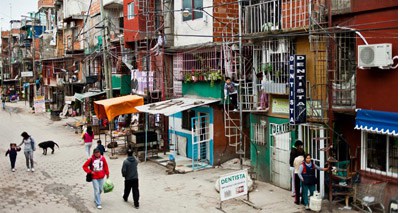
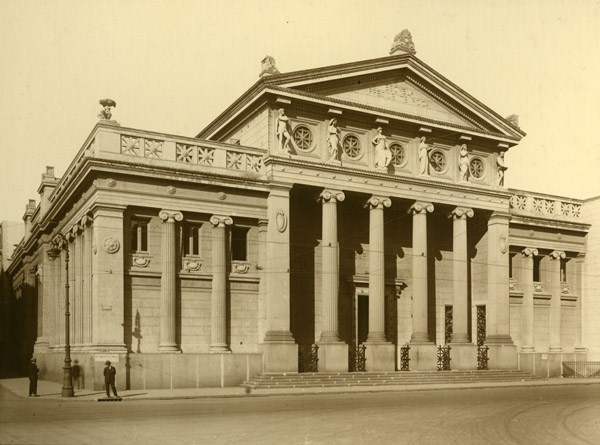
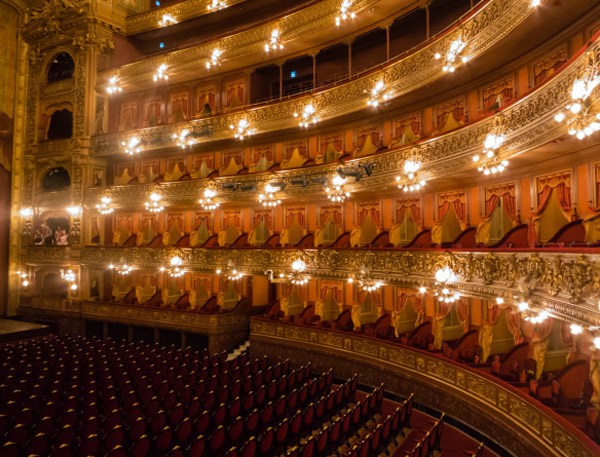
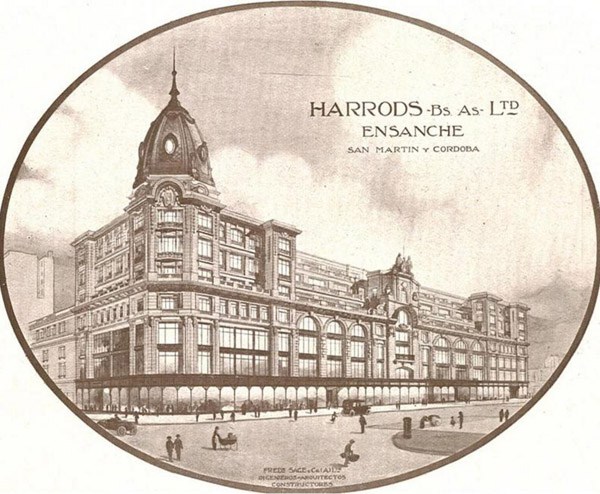




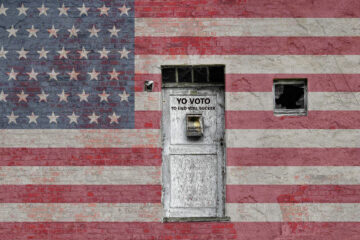

With applied technology, the Polar Regions could
be made amicable for Whites. The same could be
said for the shallow undersea continental shelves…
…and quite possibly Lunar colonization as well.
However and as always, how to keep the technology
out of the hands of the Jews. With White racial
extinction looming on the horizon, is it so far-fetched
to consider extermination of our sworn enemies? After
all, they have made no secret of their desire to exterminate
us:
http://whitegenocideproject.com/what-anti-whites-say/
With the infinite hatred they hold for us, I have no doubt that their descendants in 100 years would be scour across the snow topped Atlas Mountains looking for some tiny lost white village of “racists” to cull. No, this one won’t end in a draw.
If only we in Europe had the possibility to live in gated cities like Nordelta…
Let’s face it, Whites are in an irreversible decline, so at least for me, the prospects of a peaceful, comfortable phase out is more appealing than the current situation where I am thrust into this cohabitation with non-whites.
I believe our decline can be reversed. All we need are a dedicated, organized million men and women and nothing can stop us. Elections won’t matter then. We probably have a hundred thousand radical racialists already, if what I see on social media these days is any indication. We need to grow and get organized. Join the National Alliance!
Right. All we’re lacking is a plan. I think there is far too much grousing going on about how bad things are and not enough strategizing about how we can exit the current system, and start again on our own. There is still an enormous amount of Whites the world over and yet, we only need a small percentage of them to make a go of it. Since most people are joiners instead of leaders, once a new White society got going, there would be a tidal wave of White migration into that society. I’ve often thought about Alaska. Is there enough arable land there? Could the infrastructure support an influx of 500,000-1 million more people? Since it’s relatively low in population, just 700,000 or so, could we get our… Read more »
Seriously. It’s time to find a landing ground – and simply make it happen.
Perhaps a great place for a new and reinvigorated Alliance would be the Nordic state of Iceland. A sound infrastructure and well-bred Caucasian population would certainly insure the existence of the Race, which already exists! Even Commander Rockwell had the good taste to take a Nordic woman from there as his wife! Fewer than one hundred Jews are there, and they can be dealt with in a heartbeat! Although just south of the Arctic Circle, in every other sense I would consider it in the Polar regions with none of the disadvantages. Iceland threw out and imprisoned the crooked banksters during the Crisis of ’08 and was one of the countries hardest hit by the Jew-manufactured pestilence. Its three largest banks collapsed and it was forced to introduce capital controls… Read more »
The trouble there might be newly progressive Icelanders…. after all, they were all quavering in their boots when they proposed outlawing genital mutilation for their baby boys and girls alike and then were threatened by the ADL and what-not. The Jews now have a rabbi there — but sure — if we could kick them out (and that would be important) and learn Icelandic and make a go of it YES.
But I’m wondering if converging in Montana, North Dakota, Alaska — ANYWHERE — but in the US might be best…
I had thought that Argentina was–racially speaking–in better shape. With its anti-Negro (Brazil/Venezuela) sentiment, I had even thought of it as an undervalued place of investment and refuge. Unless something is explicit, it doesn’t really count. Russia and it’s vast territories have been suggested as a potential “White homeland,” and with Putin’s apparent resistance to the current state of affairs. Putin? A “nationalist” with a Chinese girlfriend.
It was even discussed in this website that Russia is a nationalist nation but not based on race but on culture.
I think that, roughly speaking, it is fair to say that anything to the West and to the South of Moscow is essentially Asian with the Whites (Slavs) there being descendants of Slavs relocated there in USSR times or earlier.
That’s exactly how it is. I think is the first time I’ve seen an actual portrait of the racial situation of this country. It would seem strange to you, but this was quite refreshing for me. Actually, it is not that bad where I live, so I can’t complain much to be honest. What I’m really glad to see is that the article didn’t praise Peron as if he was “one of us” or the like; please, this is something important. There are some “right wing” Peronist groups that could be labeled as “conservatives”, or “fascists”, or they pretend to be that — but they always miss the point on race. Many people here like to believe that Perón was sympathetic to National Socialism but that isn’t true at all,… Read more »
OK, that was weird, but today they started captioning some of their videos for the English speaking audiences. Too bad they don’t speak about immigration here, but still you can clearly see what they stand for. For example, they do point out that China is being manipulated by the Rothschilds but they never mention anything about them being jewish… For them is about the “financial elites” against the “working classes”, but never about jews as a parasitic force. I know is off-topic, and you shouldn’t post it either since it won’t make any sense without the other, but I think is a good example of what I was saying about them. Sorry, this would be my last post about it, but I think it was important you knew about them… Read more »
I forgot to say something, There’s no real reason to worry about people like Salbuchi, he is a writer and a former columnist of RT, his party is not really relevant at all and most of the people who followed him before abandoned him because of all I was saying. My “warning” to the National Alliance was because I just got tired of seeing him talking with people like David Duke, pretending to care about European immigration and related topics and using their fame to gain notoriety. They obviously sympathize with what they consider to be the “far right” but they are not white separatist at all. I was born in 81 and started to care about race only about 1998, and I have to say that I never felt… Read more »
There is actually a book written by a Israely historian, Raanan Rein, called “Los muchachos peronistas judios” (“The Jewish peronist guys” (2016)) where he explains how actually Peron helped the jewish to have more rights in the Argentinean society. Therefore, the idea that Peron was of anti-semitic afiliation is wrong and outdated after this book. If you look at the $100 pesos bill of Argentina, you will clearly see the stars of David under Evita Duarte’s (Peron’s wife) portrait. Duarte is apperently a surname of Jewish origin.
THAT BILL WASN’T DESIGNED by Eva nor Juan Peron.
Descendant of Duarte, a Portuguese form of Edward (rich guardian).
From German “ot-ward” – prosperous guardian. Name of a province in central Dominican Republic.
Andalusian name from Seville and descended from King don Duarte of Portugal.
I´m from Argentina. A data you may not know, is that Cristina Fernandez de Kirchner´s mother is a jew, so she is a (self) unrecognized jew…
Yes, “Wilhelm” is her mother’s surname, but she resents them for some reason, she even was labeled as an “anti-semite” by the ADL for that shakespeare reference about the vulture funds issue.
Her husband looked a lot more like a jew, and he was a lot closer to them. I have to mention the ADL again because they even called him “a friend of the jews” on an editorial when he died. I don’t know if he was actually one of them anyway. Most of the “Kirchners” from Uruguay are jewish, but they came mostly from central Europe, and Nestor’s family came from Croatia, supposedly. He might have some indian blood too, I don’t know. I do know both his father and grandfather were known as usurers anyway…
Hi, I have a little update in case someone read my “just for the alliance” posts. Remember I told you about the “mapuche” indians and how they were going to use their cause as a way to try to take the south? Well, that’s already happening. Those indians even threw petrol bombs against a couple of police stations in the south. It’s surreal… that “missing activist” Santiago Maldonado was even mentioned by the BBC. I’m really sorry for anyone’s death, but I even welcome this kind of “guerrilla” situation, because this will never work OK for them in this country… besides the media pressure for the disappearance of that guy, I can’t imagine anything better for Macri, normal people are more afraid of the leftist than anything else, I predict… Read more »
Sorry, I meant “Prensa Republicana”. I recommend 100 % Nicolas Marquez book against “Che” Guevara, there’s not another book in the world about that marxist as docummented as his. He is preparing a newer edition and I believe it should be out just for the “anniversary” of that “revolutionary leader” in a couple of months.
The only problem I have with Marquez is that he doesn’t mention the jews at all, most of his enemies are well known local jewish communists, like “Jorge Altamira” (real name Jose Saul Wermus), but they don’t even mention that kind of facts…
I’m almost spamming the site, sorry for that and all the misspelled words, but I’ve just received this video, it was posted yesterday: Adrian Salbuchi is or was married to a jewish woman actually.
https://www.youtube.com/watch?v=zhvf21-Dexk
I couldn’t believe it was that bad, but it was kinda obvious there was something very wrong with that “movement”. Everything makes perfect sense now… never trust a Peronist…
Sorry again for the grammar and I don’t think I’ll need to add anything else about those false nationalists again.
I don’t know if I should post this or not, but since I already mentioned it, I have to say I really recommend this book a lot. If you consider this is beyond off-topic, that’s fine, but this is amazing. I don’t know any other person that dares to destroy the figure of “Che” here in Argentina, I really wish they don’t kill him. Some leftiest are angry because he is releasing this now that everyone will commemorate the 50 year of his death… doing this is like a blasphemy for those pshycos. I don’t know if he will translate the book, but I wish they do, after reading this thing, nobody can deny Guevara was a psychopath, and every single fact is well documented. I didn’t even knew that… Read more »
There you have it, now that the Kirchners are officially defeated, the numbers of deported illegals will rise even more, hopefully they will start destroying those slums soon too. According to this article, the number of (deported) people grew to a “3150 %” in this two years of Macri as president.
https://www.infobae.com/sociedad/policiales/2017/10/25/la-justicia-avalo-el-decreto-de-macri-para-echar-extranjeros-las-deportaciones-aumentaron-3150-en-dos-anos/
I know Argentina is not relevant and you wouldn’t like him because he is too close to Israel, but see what Macri did in this little time. The peronists are the worst thing. They bring those illegals because then they can stay in power thanks to their vote, just like the socialists in Europe with the muslims or the democrats with the mexicans. That’s what they have always done…
I’m a white argentinian and I live in the beautiful town of Bernal, south of Buenos Aires. This article portrays a very sad truth that my family had suffered. When my immigrant granparents bought the house i was raised at, they bought it because it was 100m away from a very big park. Thanks to Kirchner’s policy, that park became the biggest slum in the grater buenos aires area, full of immigrants and criminals. I had to invest a lot of money in safety, mostly cameras, alarms and reinforced doors. Thanks to the so called “Latin american brothers”….
I’m planing to move to a gated community soon, I can’t take that anymore. I live with fear and i don’t want that for my children.
When my grandparents came to the Midwest from Lombardia long ago, they could just as likely have opted for Argentina. I guess I was naive to think that Argentina would be spared. Such a beautiful land.
It is surprising that Juan and Eva Peron were not even mentioned in this article about Argentina. They emulated the Third Reich in Germany . It may be what has happened to Argentina is revenge by the”animus mund” for such disobedience. I have met Argentinians , genuine Spanish racial fleeing to Florida. They are Aryan people escaping the post war revenge of retribution from the self proclaimed possessors of the earth.
I’m quite interested in the Peron’s, for one, because of Peron’s alliance with escaping Nazis, and for their social work with the poor, ruralist working class. The personists today do not in anyway represent what Juan and va tried to achieve. Oddly, Eva had good things to say about Lenin and her husband was sympathetic towards fascism and thought the Nuremberg trials were a sham. According to some authors, Otto Skorzeny, a good friend of Hitler, travelled between Spain and Argentina, where he acted as an advisor to President Juan Perón and as a bodyguard for Eva Perón. ow this is odd because Skorzeny fought with Egypt against Israel, he also trained Palestinians in the 50’s to fight the Zionists but in the 60’s he was recruited by Mossad for… Read more »